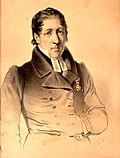This article needs additional citations for verification .(August 2017) |
| Part of a series on |
| Lutheranism in the United States |
|---|
 |
| Part of a series on |
| Laestadianism |
|---|
 |

The Laestadian Lutheran Church (LLC) is a religious Christian movement, with teachings based from the Bible and the Lutheran Confessions. When it was reorganized, from the Heidemanians, on June 9, 1973, the organisation was named the Association of American Laestadian Congregations (AALC). The association then changed its name in 1994 in order better to convey its spiritual heritage. As of 2025 [update] , the Laestadian Lutheran Church has 30 member congregations [1] in the United States and Canada, with highest concentrations of members in Minnesota, Washington, Arizona, Michigan in the United States and in Saskatchewan, Canada; the congregations are served by about 90 ministers, [2] nearly all of them lay preachers.
Contents
In Northern Europe, the association's sister organizations are the Conservative Laestadians' Central Association of the Finnish Associations of Peace (Suomen rauhanyhdistysten keskusyhdistys) in Finland, the Sveriges fridsföreningarnas centralorganisation in Sweden, [3] and the Estonian Lutheran Association of Peace (Eesti Luterlik Rahuühendus).
The main teaching among them is of Jesus' suffering, death, and resurrection. The work of Jesus Christ continues in this world by the Holy Spirit, through whom Luthern Laestadians preach forgiveness. Laestadians believe both lay congregants or pastors can preach forgiveness, [4] often uttering "All sins are forgiven in Jesus name and precious/holy blood." The Laestadian Lutheran Church teaches of God's kingdom and the need for repentance and the forgiveness of sins. The church holds, in accord with the Lutheran Confessions, that the Bible is the highest guide and authority for Christian faith, doctrine, and life. The norms in the congregation such as refraining from birth control, makeup, and dancing, are some of the things members do not feel are right to do as a child of God.
The Laestadian Lutheran Church takes its name from Martin Luther and Lars Levi Laestadius. Laestadius was a Lutheran pastor who served in northern Sweden from 1825 to 1861. The movement reached North America with Finnish immigrants in the 1860s. Congregations were first formally organized in Cokato, Minnesota, in 1872 and Calumet, Michigan, in 1873. The Laestadian movement in North America has suffered a number of schisms since 1890. The subjects of disagreement have mainly been the understanding of justification, God's congregation, and the sacraments. The last division occurred in 1973 and resulted in the establishment of the Laestadian Lutheran Church, and the First Apostolic Lutheran Church.